WHAT IS ANIRIDIA?
Congenital Aniridia is a genetic degenerative pan-ocular eye disease present at birth. Most striking feature is a complete or partial absence of the colored part of the eye (iris). However, multiple structures in the eye are also affected such as the cornea, crystalline lens, retina and optic nerve which are often not fully developed.
Unlike eyes without anomaly, young aniridics will suffer a spectrum of vision conditions and pathologies with a variable degree of severity, some present at birth and some arising in adult life. All of these will impact the quality of sight acuity and speed of vision loss:

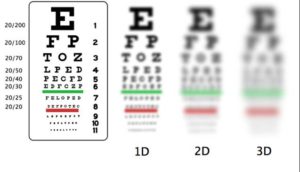
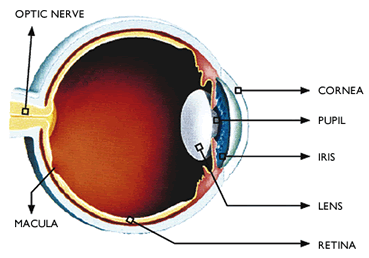
- Poor acuity ranging from functional (20/100) to legally blind (20/200) and worse.
- Hyper light sensitivity
- Refractive errors: Myopia (nearsightedness), Hyperopia (farsightedness, Presbyopia (loss of zoom focus near and far), and Astigmatism (distortion)
- Amblyopia (Lazy eye) and ptosis (droopy eyelids)
- Nystagmus (rapid uncontrolled eye movements)
- Malformation of the retina and optic nerve (hypoplasia)
- Cataracts (clouding of lens and imperfections)
- Lens displacement (weak internal muscles and ligaments)
- Retinal detachment
- Dry surface eye disease (meibomian tear gland malfunction)
- Keratopathy (Corneal degeneration)
- Fibrosis (Internal scarring in the eye)
- Glaucoma (increase in pressure inside the eye causing irreversible damage)
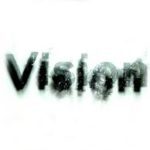
While eyes without anomaly may still experience one or more of these conditions, Aniridics will experience many or all of them in their lifetime. Originally thought to be uniquely a condition of the eye, Aniridia is now recognized as a syndrome caused by, most often, a dominant mutation found on the PAX6 Gene in chromosome 11. Other, more rare gene mutations, also exist that cause the same condition. Potential health problems documented in relation to a diagnosis of congenital Aniridia with PAX6 insufficiencies include; sugar intolerance and increase diabetes risk, Central auditory processing disorder (hearing and olfactory, Obesity (higher BMI than siblings), sleep disorder and Autism.
Following a diagnosis of Aniridia by an ophthalmologist, genetic testing is mandatory to determine the specific mutation and verify the presence of other associated syndromes like WAGR Syndrome.
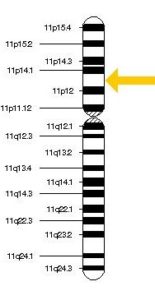
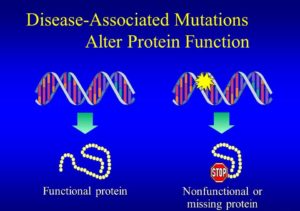
GENETICS
Aniridia is ultra-rare and affects 1:40 000-100,000 newborns worldwide, males and females equally. A person needs to have both sets of the PAX6 gene inherited from their parents to have normal healthy eyes. When a mutation happens on one of the inherited gene, either a defective protein is produced or none at all. This protein has an active role as moderator to the limbal stem cells, and like a foreman, it controls how, when and where to produce the different parts of the eye during embryonic eye development. Aniridics are born deficient of this protein and as a result, have incomplete or malformed eye structures. The PAX6 protein also has an active role in the maintenance and repair of healthy eyes during adulthood. Unlike normal eyes, aniridics do not have the ability to heal well after surgery or injury due to the lack of functional stem cells. The combination of any chronic symptoms and pathologies is responsible for progressive vision loss in adult patients.
Aniridia is passed on to children at a rate of 50%. About one-third of all new cases of Aniridia is from a spontaneous (sporadic) mutations, meaning there is no previous family history.
In collaboration with international associations, the Canadian Aniridia Foundation is focused on awareness, education, fundraising for research, and provides support for the patients. Our hope is to ultimately improve the quality of life for sufferers and more successfully manage this debilitating genetic disorder.
If you would like more information on Aniridia please contact us.
Donations to help find treatments and cures for Aniridia are always welcome. CLICK HERE TO DONATE
Reference: Orphanet Canada: 98557- Syndromic aniridia http://www.nature.com/ejhg/journal/v20/n10/pdf/ejhg2012100a.pdf